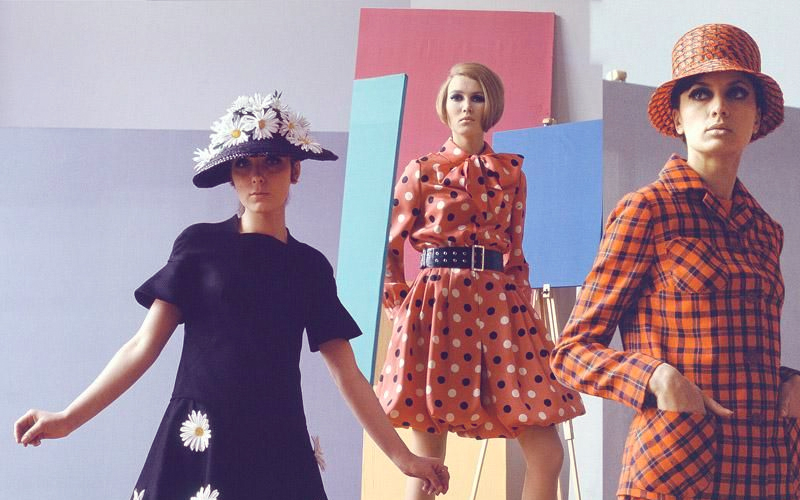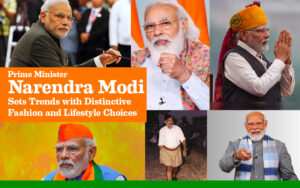Polish fashion is characteriz by a blend of traditional elements and modern trends, reflecting the country’s rich cultural heritage and contemporary influences. Polish designers are known for their craftsmanship, attention to detail, and innovative designs, which have gained recognition both domestically and internationally.
Traditional Polish clothing includes items like the żupan (a long robe), kontusz (a type of coat), and sukmana (a long, quilted coat), which are often embellished with intricate embroidery and patterns. These garments are typically worn on special occasions and celebrations to showcase Polish cultural identity.
In modern times, Polish fashion has evolved to encompass a wide range of styles, from casual streetwear to high-end couture. Polish designers draw inspiration from various sources, including history, art, and global fashion trends, resulting in a diverse and dynamic fashion scene.
Warsaw, the capital city, is a hub for fashion in Poland, boasting numerous boutiques, fashion shows, and design studios. Additionally, Kraków and Łódź are also known for their vibrant fashion scenes, with emerging designers and established brands showcasing their creations.
Overall, Polish fashion combines elements of tradition, innovation, and individual expression, reflecting the country’s diverse cultural landscape and its position within the global fashion industry.
What clothing is popular in Poland?
In Poland, popular clothing styles vary depending on factors such as age, region, and occasion. However, there are some clothing items and trends that are generally well-liked across the country:
- Casual Wear: Jeans, t-shirts, and hoodies are popular choices for everyday casual wear among both men and women. Comfortable and versatile, these items are staples in many Polish wardrobes.
- Dresses and Skirts: For women, dresses and skirts are popular choices, especially during the warmer months. Flowy maxi dresses, A-line skirts, and midi-length styles are commonly seen in both casual and formal settings.
- Blazers and Jackets: Blazers and jackets are essential pieces for layering, particularly during the transitional seasons. Both men and women often opt for tailored blazers or stylish leather jackets to add polish to their outfits.
- Traditional Clothing: Traditional Polish clothing, such as the żupan, kontusz, and sukmana, remains popular for cultural events, weddings, and festivals. These garments are often beautifully crafted and adorned with intricate embroidery.
- Sportswear: With the growing popularity of fitness and outdoor activities, sportswear brands and athleisure clothing have become increasingly popular in Poland. Leggings, sneakers, and moisture-wicking tops are commonly worn for exercise and casual outings.
- Outerwear: Given Poland’s cold climate, outerwear is essential, especially during the winter months. Parkas, puffer jackets, and wool coats are popular choices for staying warm while still looking stylish.
Overall, Polish fashion embraces a mix of traditional and contemporary styles, reflecting the country’s diverse cultural influences and modern lifestyle.
What is the national dress of Poland?
The national dress of Poland varies depending on the region and historical period. However, one of the most iconic traditional Polish outfits is the “krakowiak” costume, which originated in the Kraków region. The krakowiak costume typically consists of a white blouse with puffed sleeves, a colorful embroidered vest or bodice, a full, pleated skirt, and a floral headpiece or scarf.
Another traditional Polish outfit is the “żupan,” a long, robe-like garment worn by both men and women. The żupan is often made of richly embroidered fabric and worn with a sash around the waist.
For men, the traditional Polish outfit may include elements such as the “kontusz,” a type of coat worn over the żupan, and the “żupanek,” a shorter jacket worn over the kontusz. These garments are often paired with trousers, boots, and a distinctive hat, such as the “krakowiak” or “czamara.”
It’s important to note that traditional Polish dress varies across different regions of the country, with unique styles and variations influenced by local customs, history, and cultural heritage.
Is Poland cheap for clothes shopping?
Poland can be relatively affordable for clothes shopping compared to some other European countries, but it ultimately depends on where you shop and what you’re looking for.
In larger cities like Warsaw, Kraków, and Wrocław, you’ll find a wide range of shopping options, from high-end boutiques to budget-friendly stores and markets. Popular shopping destinations include shopping malls like Złote Tarasy in Warsaw or Galeria Krakowska in Kraków, where you can find a variety of international and Polish clothing brands.
Additionally, Poland has a growing number of outlet malls and discount stores where you can find discounted clothing from well-known brands. These outlets often offer significant discounts on end-of-season items or overstocked merchandise.
If you’re looking for even more budget-friendly options, you can explore local markets and thrift stores, especially in smaller towns and rural areas. These venues often offer unique finds at lower prices, making them ideal for bargain hunters.
Overall, while Poland may not always offer the rock-bottom prices found in some other countries, it can still be a relatively affordable destination for clothes shopping, especially if you’re willing to explore different shopping venues and take advantage of sales and discounts.




